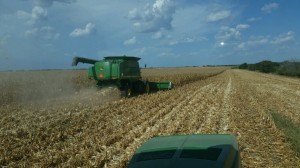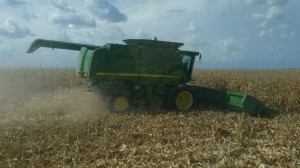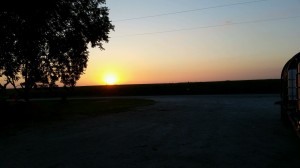The days are getting shorter. The sun is rising later. When I open my eyes, my ears are abraded by the jar of the cell phone alarm. No light shines through yonder door. It is dark outside, and it is difficult not to roll over and wait for spring to rise. But, that would be another six months or so, and there is important stuff to do, I think.
My favorite days of the year are those of the long light: spring and summer. On March 20, 2014, vern equinoxed. Vern is not a plumber from New Jersey. Vern is my shorthand for “vernal,” which means of or pertaining to spring. March 20th was the first day of spring (vern) because the daylight equaled the nightdark (equinox). On that day, I was ecstatic and jumped from my bed silencing the cell before it could mar the ever brightening day. I love the sun.
Now, my elation has turned to deflation. I see the light fading and spy the autumnal equinox on the horizon. On that day of equal night, September 23, 2014, my sun will begin its dive to the south and the dark will again crowd forward into the day.
I enjoy the change of seasons. I enjoy the cooler days. I enjoy the approaching Holidays. I do. I really do. But, I miss the sun.
To brighten my gloomerie, I asked my wife what song she was thinking of — to hear what would pop into her head. I needed a lift.
Her answer was immediate: “Oh, Crunchy West.”
“That’s no song,” I said.
“Yes, it is,” she answered. “My little nephew wrote it. He was trying to spell ‘Oh, Country West.”
The little nephew was 5 when he penned the tune. Now, he’s 28. He has older twin sisters. The second was married last Saturday. The other, the older by seven minutes, was married four months ago. I thought, “Mom and Dad are now a poorer, happier couple.” I smiled. It was working. I remembered when the twins were born. The parents had been told to expect a single baby. They were surprised with two girls. Last Saturday was a second delightful wedding. Dad told us, between tears, how he’d spent two months in the hospital beside the littlest, youngest twin when the doctors said she wouldn’t make it. That tiny baby girl was now a beautiful, radiant, healthy bride. I smiled again.
“Why ‘Crunchy?’” I asked my wife.
“The little guy liked crunchy cereal,” she answered.
Three days before the wedding, our newest grandson was born in the same city as the wedding. The timing was perfect. Our first stop was to visit and hold the little guy. He has the longest fingers and a serious stare that evaluated me between opening eyes. I smiled remembering the look. His two-year-old brother seemed a bit concerned as he crunched chips at the Mexican place we’d picked for lunch. So, I took the older brother running and exploring and yelling through the restaurant while parents and wife and baby sat staring googly-eyed. Sometimes, it’s fun just to be kids. We both smiled when the staff asked if we might leave. It was a good lunch.
“There is no song ‘Oh, Country West,” I told my wife. “I just checked the Internet.”
“I know,” she answered. “It’s “Oh, Crunchy West.”
I smiled.
Why is she always right?
And, it’s not just this time of the year.
I smiled again and looked forward to the equinox.
Grandpa Jim






